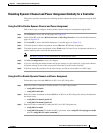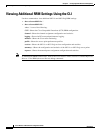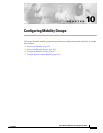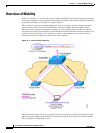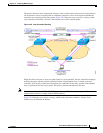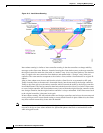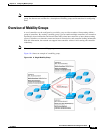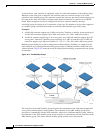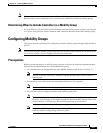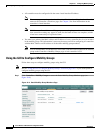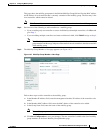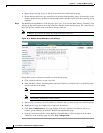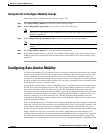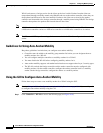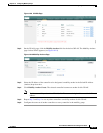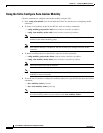
10-7
Cisco Wireless LAN Controller Configuration Guide
OL-8335-02
Chapter 10 Configuring Mobility Groups
Configuring Mobility Groups
Note Clients may roam between access points in different mobility groups, provided they can hear them.
However, their session information is not carried between controllers in different mobility groups.
Determining When to Include Controllers in a Mobility Group
If it is possible for a wireless client in your network to roam from an access point joined to one controller
to an access point joined to another controller, both controllers should be in the same mobility group.
Configuring Mobility Groups
This section provides instructions for configuring controller mobility groups through either the GUI or
the CLI.
Note You can also configure mobility groups using the Cisco Wireless Control System (WCS). Refer to the
Cisco Wireless Control System Configuration Guide for instructions.
Prerequisites
Before you add controllers to a mobility group, you must verify that the following requirements have
been met for all controllers that are to be included in the group:
• All controllers must be configured for the same LWAPP transport mode (Layer 2 or Layer 3).
Note You can verify and, if necessary, change the LWAPP transport mode on the Controller >
General page.
• IP connectivity must exist between the management interfaces of all controllers.
Note You can verify IP connectivity by pinging the controllers.
• All controllers must be configured with the same mobility group name.
Note The mobility group name is generally set at deployment time through the Startup Wizard.
However, you can change it if necessary through the Default Mobility Domain Name field
on the Controller > General page. The mobility group name is case sensitive.
Note For the Cisco WiSM, both controllers should be configured with the same mobility group
name for seamless routing among 300 access points.



